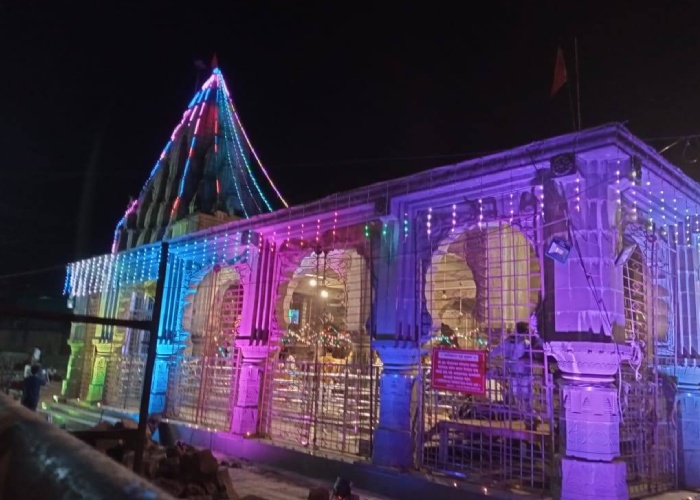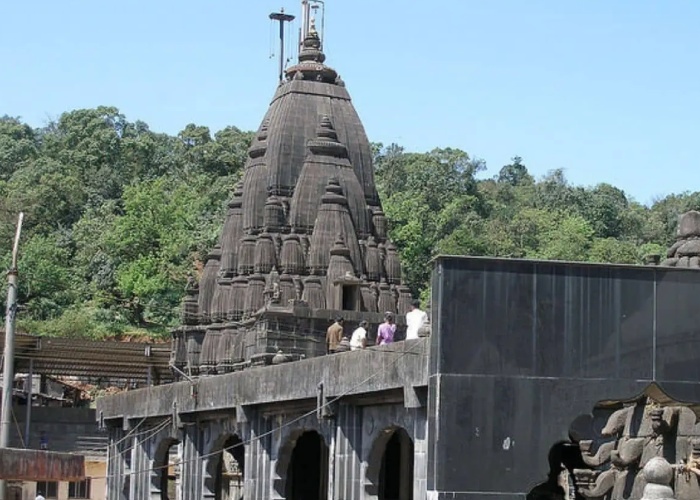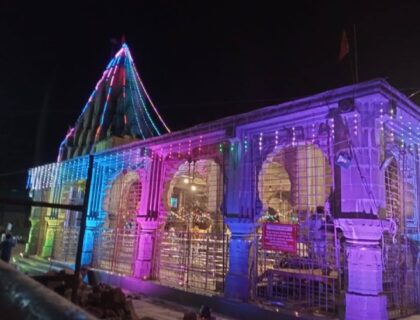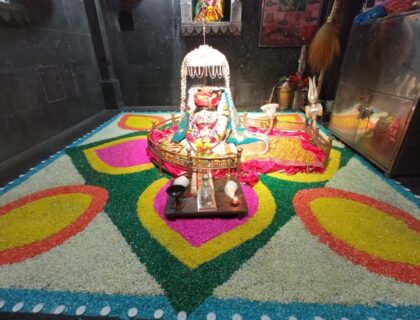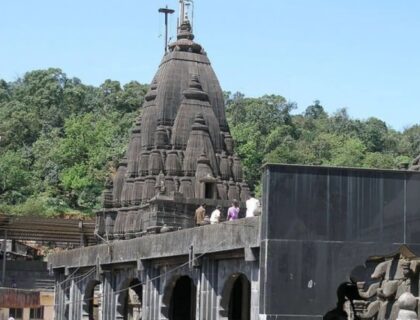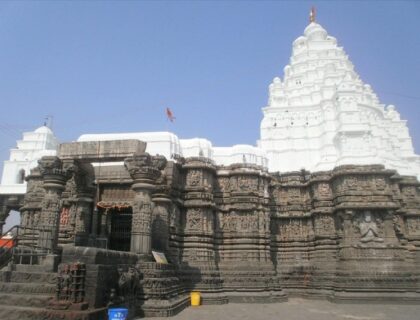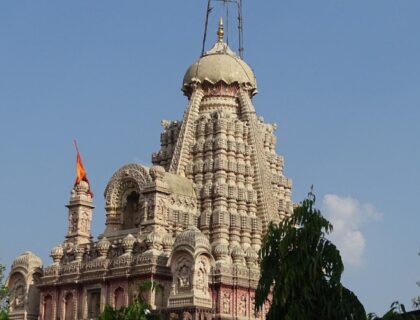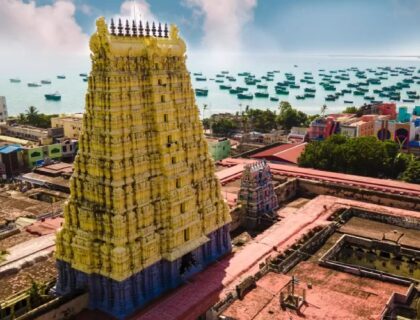Bhimashankar Jyotirling
Bhimashankar Jyotirling is an old holy place and is one of the 12 jyotirlingas, Lord Shiva’s most sacred shrines located on the Sahyadri slopes in Maharashtra. It is located in the Ghat region of the Sahyadri Mountains. Bhimashankar Jyotirling is among the twelve Jyotirlingas arranged all over India.
It is located 50 kilometres northwest of Khed taluka (also known as Rajgurunagar) in the village of Bhojgiri in Maharashtra, India. The river Bhima, which flows southeast and joins the Krishna near Raichur, originates in Bhmshankar as well.
The story behind Bhimashankar Jyotirling
According to legend, an asura (demon) named Bhima and his mother Karkati lived in the Dakini forests on the ranges of the Sahyadri Mountains. He was, in fact, the son of King Ravana’s younger brother, Kumbharkarna. He was furious when he discovered that Lord Vishnu had murdered his father while he was Rama. To appease Lord Brahma, he vowed vengeance and underwent severe penance.

In return, Brahma bestowed upon him tremendous strength, which he utilized to terrorize the entire world. He demanded that Kamrupeshwar, a fervent devotee of Lord Shiva, pray to him rather than Shiva when he imprisoned him. Bhima used his sword to kill the Shivalinga when Kamrupeshwar refused. That’s when Lord Shiva showed up in front of him and burned him to ashes. The Shivalinga is believed to be located where Lord Shiva manifested himself.
History of Bhimashankar Jyotirling
The old temple is said to have been constructed on a Swayambhu Lingam, also known as the self-emanating Shiva Lingam. Furthermore, the Lingam is clearly located in the centre of the temple’s Garbagriham (Sanctum sanctorum). The temple’s pillars and door frames are adorned with intricate sculptures of holy beings and people. These incredible carvings depict scenes from sacred textbooks.
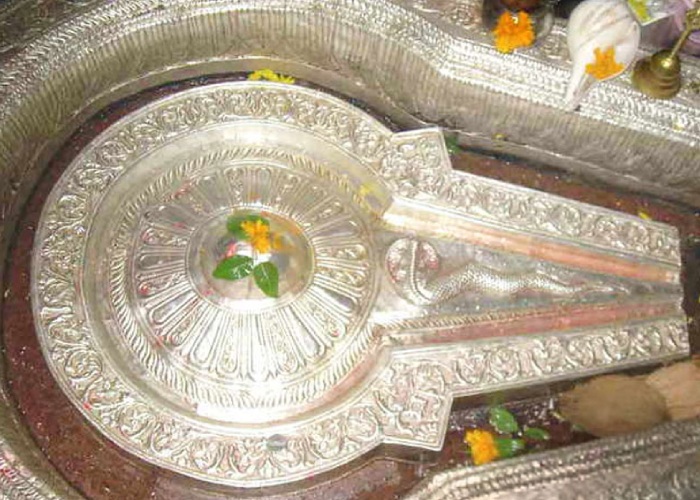
The Bhimashankar Jyotirling is a showcase for the stone workers of Vishwakarma. It was constructed in the 13th century. The Maratha empire’s statesman Nana Phadnavis built structures like the shikhara, or spires, in the 18th century. It is also believed that the endowments of the Maratha ruler, Chhatrapati Shivaji Maharaj, made it easier to worship here.
Architecture of Bhimashankar Jyotirling
Bhimashankar’s architectural style is distinguished by the use of the Nagara style, which is common in northern India. The architectural style is similar to the Hemadpanthi style, which is popular in the Deccan region. The old temple is said to have been built on a Swayambhu Shiva Linga.
Furthermore, the Ling can be seen to be precisely in the centre of the temple’s Garbhagriha (Sanctum sanctorum). The garbhagriha and antarala are built with indigenous stone in the Indo-Aryan architectural style, which is also found in Jain temples. The temple’s pillars and door frames are adorned with intricate carvings of deities and human figures.

The sanctum of the Bhimashankar Sanctuary is on a lower level and is comprised of both old and new Nagara-style structures. It exemplifies the extraordinary skill of the ancient Vishwakarma sculptors. The temple was built in the thirteenth century. The Sabha mandap was constructed by Nana Phadnavis in the 18th century. He also created and constructed the shikhara. This temple was funded by Chattrapati Shivaji Maharaj, the Maratha king, to make religious ceremonies easier.
Facts about Bhimashankar Jyotirling
- The Bhimashankar Mandir is a Jyotirling Temple situated in Bhimashankar village, in the Pune district of Maharashtra.
- Other temples close to the main temple include Kamalaja mata, an incarnation of Goddess Parvathi who aided Shiva in his battle against Tripurasur.
- Within the temple grounds, there is a minor shrine dedicated to Lord Shani. In front of the Bhimashankar Shiva Linga is a statue of Nandi.
- Mokshakund Tirtha is located behind the Bhimashankar temple. Before going to the temple, it is customary to take a bath in the kund.
- Bhimashankar has a wildlife sanctuary; it is a protected forest area with a variety of plants and animals because it is part of the Western Ghats.
- The Malabar Giant Squirrel, the state animal of Maharashtra, is a rare animal found here.
- An enormous antique Portuguese church bell stands between the two pillars in front of the “Shani” shrine.
- There is a narrow path behind the temple that leads to the riverbanks. Outside the temple, there is a large area of forest that is occasionally broken up by forts on nearby mountains.
- You can visit it during the colder months, so August to February is a good time to go. It would be ideal to visit this holy site during Mahashivratri.
Famous Festivals In Bhimashankar Jyotirling
- Mahashivaratri: The Maha Shivaratri festival is a grand event at Bhimashankar Jyotirling, as it is at all important Shiva temples. It is the main festival in town. Every year, millions of devotees flock to this town to catch a glimpse of the Lord on this auspicious day, which falls in February/March.
- Ganesh Chaturthi: Dedicated to Lord Ganesh, this festival is celebrated in August / September
- Durga Puja. (Winter) – Devotees celebrate Navaratri at this temple in the month of Ashwin (Sep-Oct) as well as celebrate the triumph of the Goddess Durga over the buffalo demon (Mahishasura).
- Navaratri. (Summer) – They celebrate other Navaratri in the fortnight of the Chaitra (March-April). Every nine days they worship Navadurga (nine Durgas).
How to Reach Bhimashankar Jyotirling
By Air: Pune (Lohgaon) is 125 km from the Bhimashankar Jyotirling Temple.
By Rail: As there is no direct train from Pune to Bhimashankar. The nearest railway station is Pune. From Pune one has to travel by bus to Bhimashankar
By Road: There are frequent buses available from Pune to Bhimashankar from the Shivajinagar bus stand. Someone can reach to Shivajinagar bus stand, and take the bus to Bhimashankar. Travel time is around 4 hours.
From the Bhimashankar bus stop, there are two options for getting to the temple: either via roadways or stairs. From the Bhimashankar bus stop, approximately 100 steps lead down to the Bhimashankar temple. Those who are unable to climb stairs can use a doli or palanquin.
Also Read – Rameshwaram Jyotirling
Location
Facilities
- Drinking Water
- Pooja Item Shops
- Prasad Shops
- Restaurants Nearby
- Resting Room


